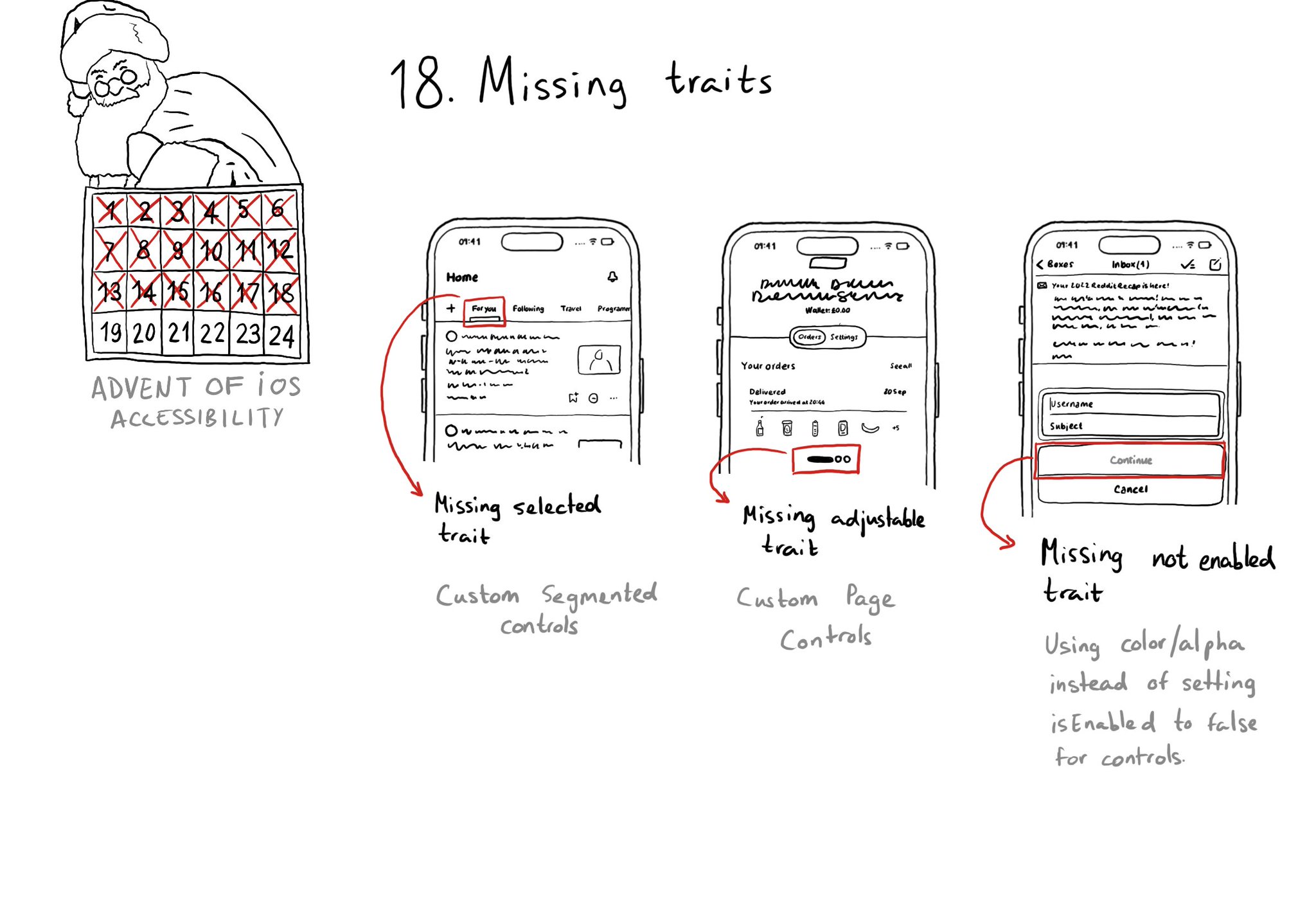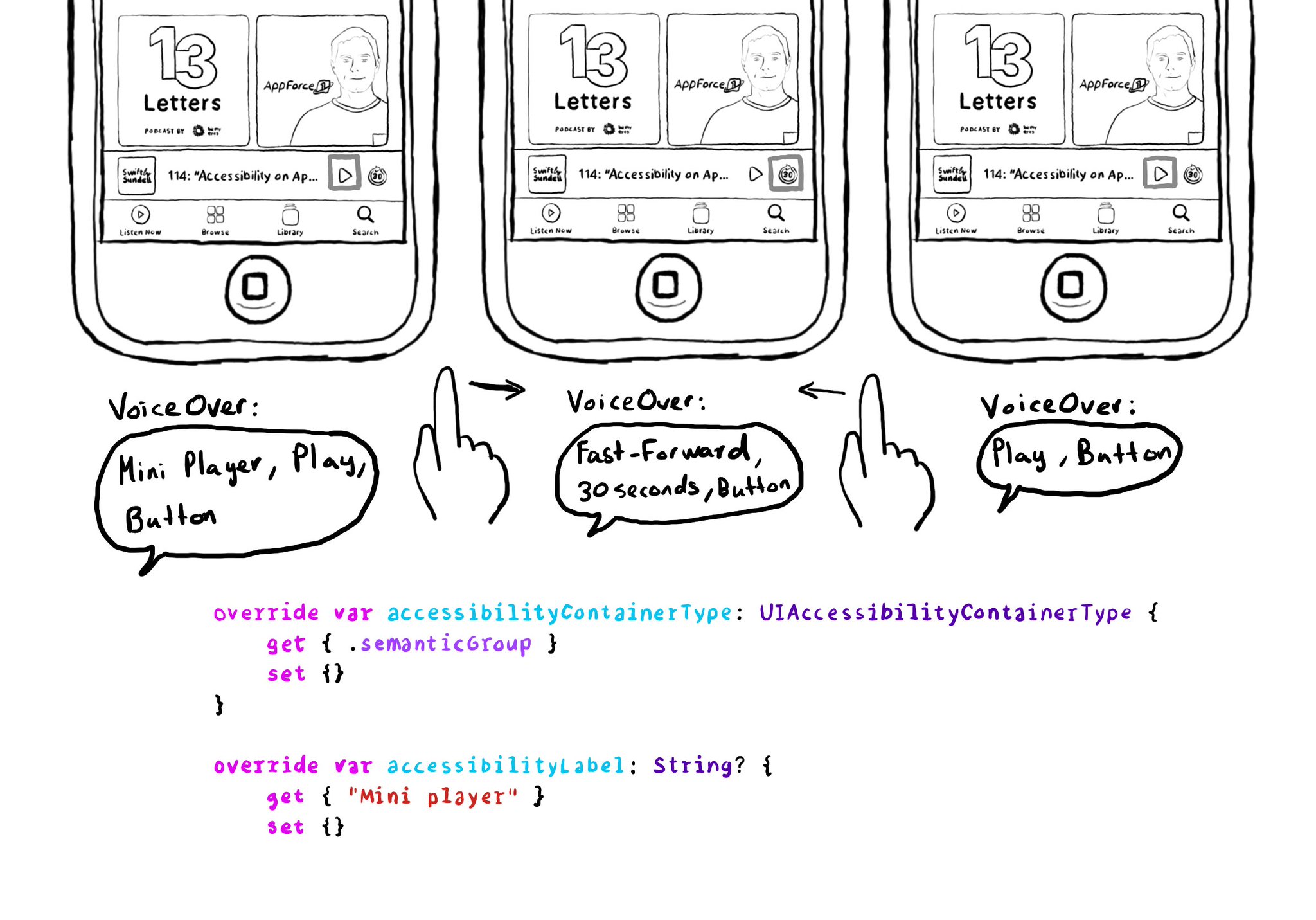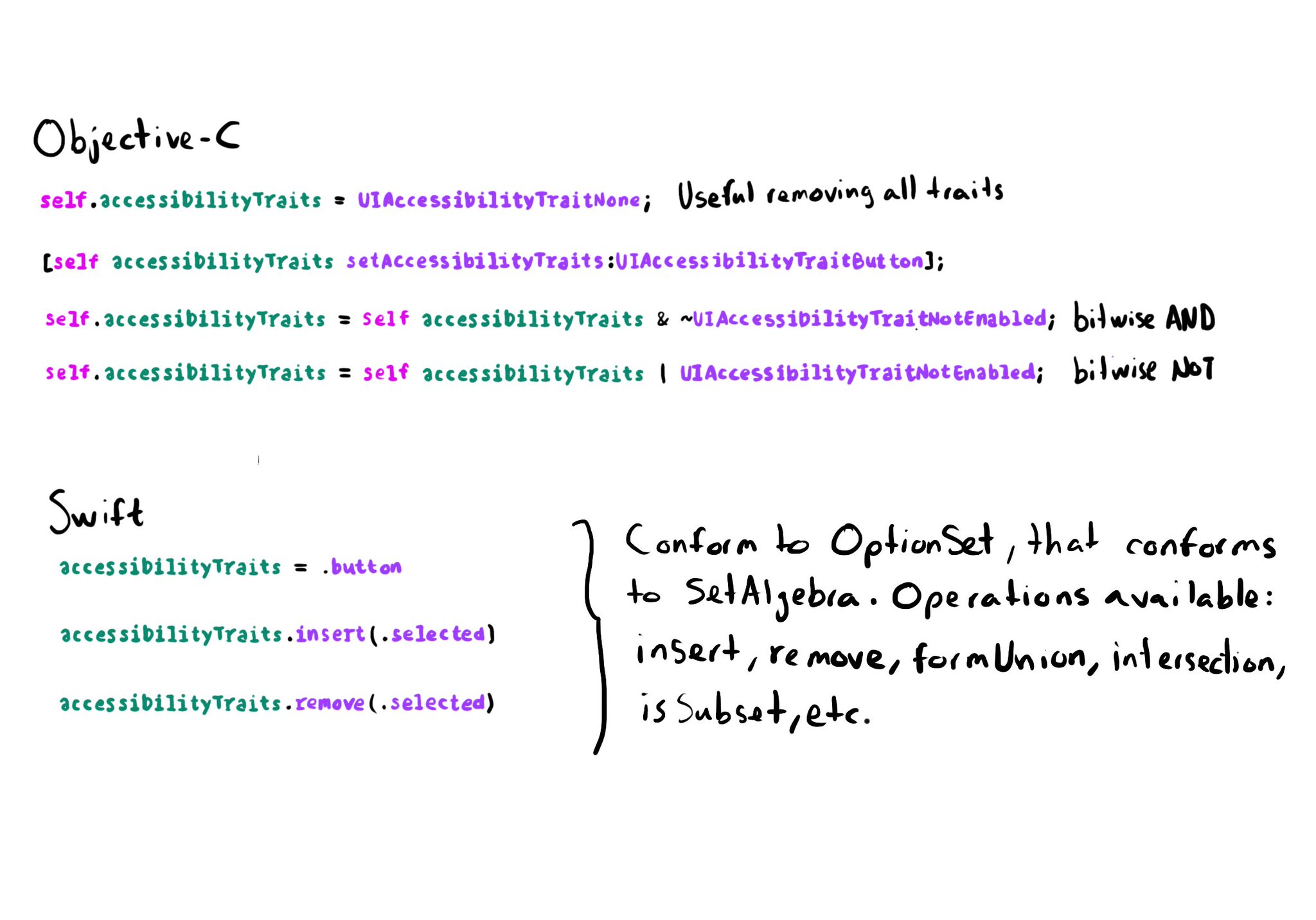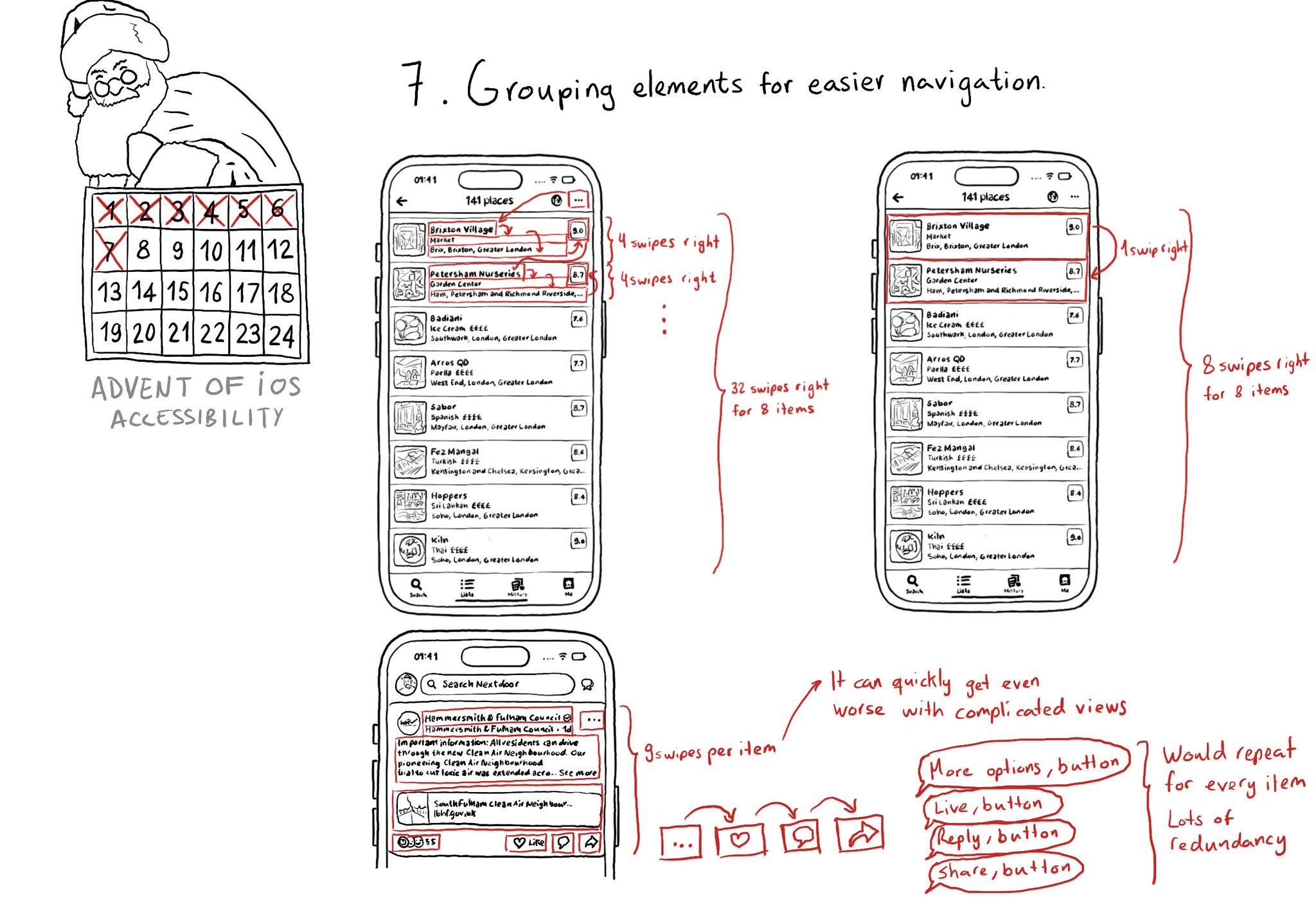When building custom components, or if not relying on UIControl's attributes to configure state, it can be easy to forget to specify the right accessibility traits. These are indispensable for a good experience with VoiceOver, Switch Control...

You may also find interesting...

Have you noticed that the first time you select an element on Apple Podcast's mini player, VoiceOver says "Mini player", and then, it describes the selected element? It gives the user more context on what "feature" those elements belong to. This can be achieved in UIKit by configuring the accessibility container type of the mini player with .semanticGroup and giving it an accessibility label, in this case: "Mini player". https://developer.apple.com/documentation/objectivec/nsobject-swift.class/accessibilitycontainertype https://developer.apple.com/documentation/uikit/uiaccessibilitycontainertype/semanticgroup

In Objective-C accessibility traits are a bitmask. Some devs find tricky to work with them using bitwise operations. In Swift they conform to the OptionSet protocol that conforms to SetAlgebra. That means you can simply insert/remove traits.

Grouping elements when it makes sense can make a huge impact on easing navigation with some assistive technologies like VoiceOver, Switch Control, or Full Keyboard Access. It also helps on reducing redundancy.